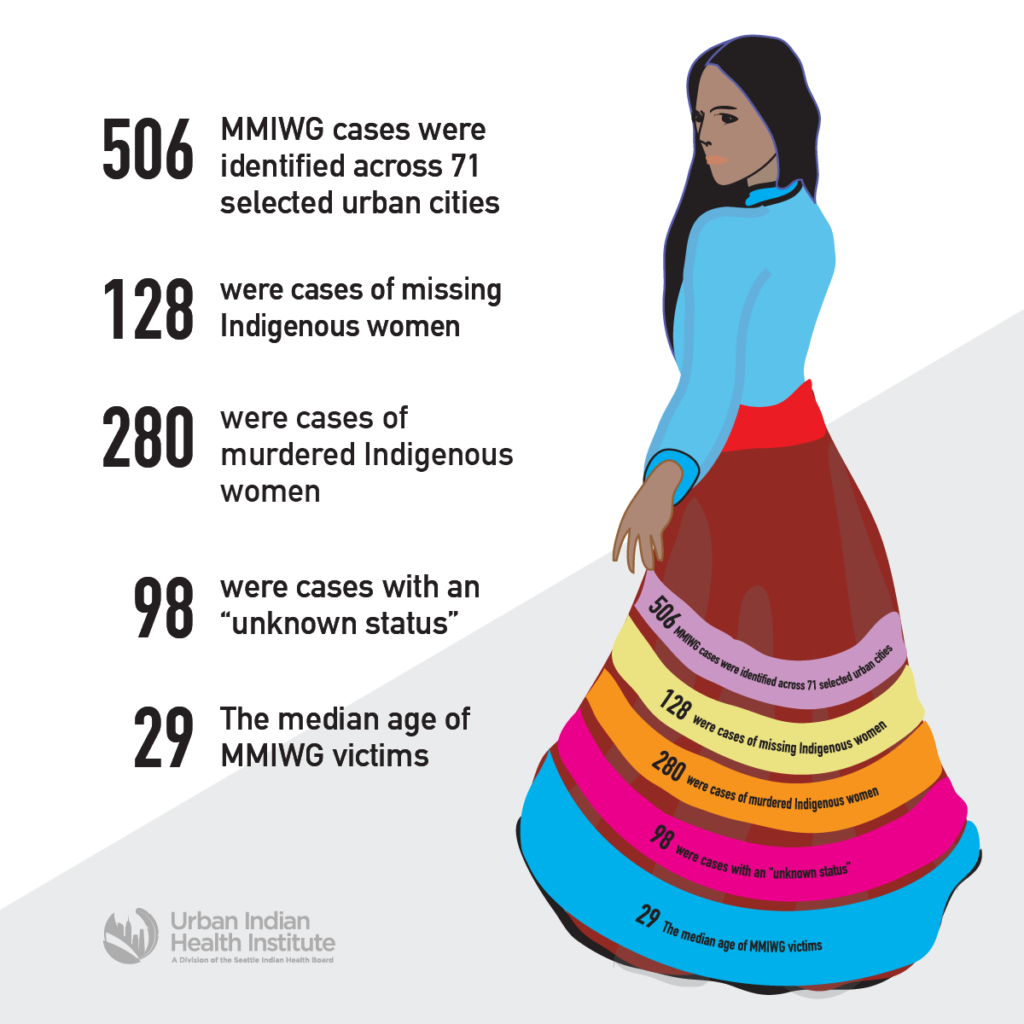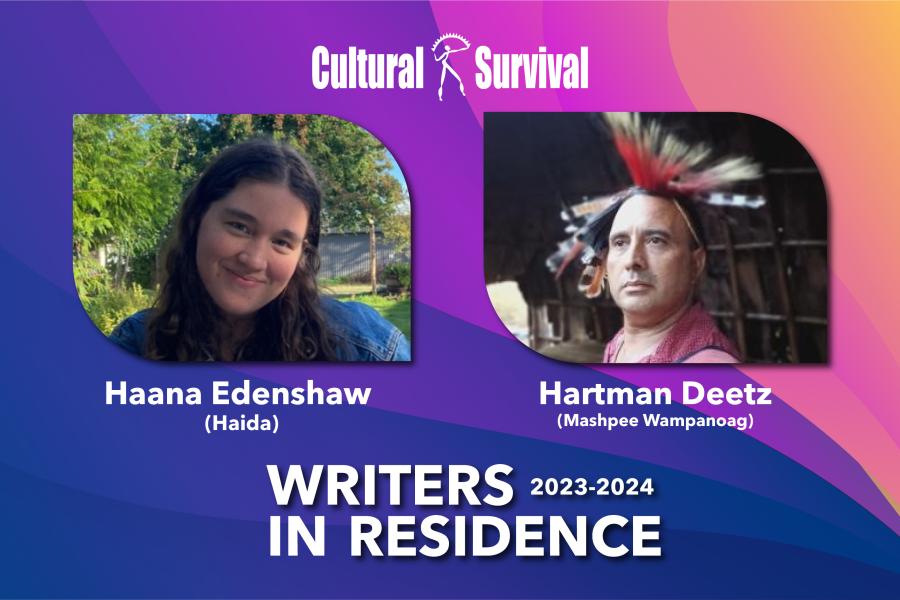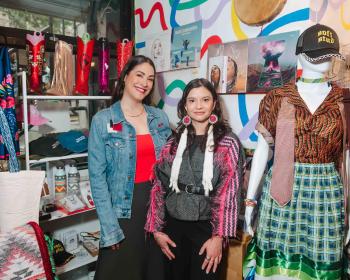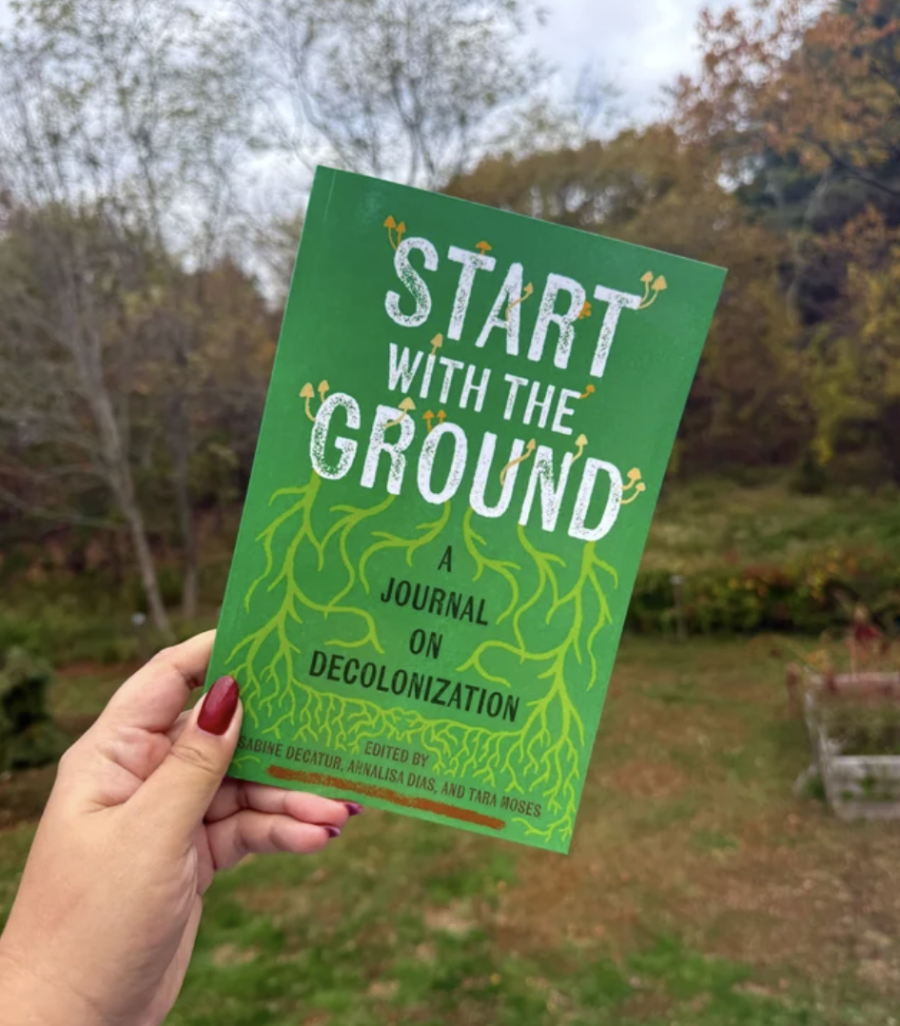
In Gordon, Nebraska, a small border town on the grassy expanse of the northern Great Plains, there is a gravestone in the town’s cemetery etched with one word: “Unknown.” It rests on the grave of an Indigenous woman whose body was found underneath a stone bridge in 1970 and, like many Native women before and after her, was never identified.
“She just died there,” said Amanda Takes War Bonnett (Oglala Lakota), public education specialist at the Native Women's Society of the Great Plains, who is working to identify the woman. “They said she had gray streaks in her hair. She was a grandma, probably.”
For decades, Indigenous women, girls, and Two-Spirits have been facing a crisis that is hiding in plain sight. Jurisdictional complications and lack of government concern have placed the burden of finding Missing and Murdered Indigenous Women and Girls on their families, friends, grassroots organizations, and others who are trying to help, like Bonnett.
In Indian Country, overlapping Tribal, state, and federal jurisdictions complicate questions of accountability. And Tribal police often lack the funding necessary to properly respond to crimes, compounding the issue.
“We kind of silently developed our own protocols for it,” Bonnett said.
Facebook pages and other sites have emerged in recent years for families and friends to post online about missing women, girls, and Two-Spirits.
Janet Franson, a Texas-based former homicide investigator, founded Lost and Missing in Indian Country eight years ago to provide a place for people to give and receive information about missing persons.
Franson recalled a case of a mother whose adult daughter had gone missing in 2019. The daughter had “gotten involved in drugs,” Franson said. “She would go and come back, go and come back. One day she went, and she didn’t come back.”
The woman learned that her daughter had been kidnapped and taken across the border to Mexico when the perpetrators used her daughter’s phone to contact her family and demand a ransom for her return. The mother worked with law enforcement to set up a sting operation to retrieve her daughter, which was ultimately successful.
“I got a text message saying, ‘The package is on our side of the fence.’ That’s all I needed to know,” Franson said.
The case was a rare outcome in a sea of unsolved cases, Franson explained. “When these women go missing, most of the time it doesn’t work out. And we don’t know for years. And for some of them, we’ll never know.”
Franson works on missing person cases in her retirement. “Nobody pays me for this,” she said. “Most people don’t realize that there are people who are trying to help in situations like this and we get emotionally invested in it, too.”
Franson added that the crisis is tied to broader issues such as domestic violence, human trafficking, and sexual assault, and that in Texas, human trafficking is a common occurrence. “I live here on the border,” Franson said. “I see it every day.”
Sexual violence against Indigenous women, girls, and Two-Spirits is not new. The current crisis builds on a history of colonialism, government abuse, and intergenerational trauma. The trauma began with colonization in the 1500s and intensified with the introduction of compulsory boarding schools in the late 1800s and the forced sterilization of Indigenous women in the 1970s, and continues to this day through systemic discrimination and marginalization.
Between 1869 and the late 1960s, many Native children were forced to attend government or church-run boarding schools designed to eradicate Native culture and language. By 1900, there were over 20,000 Native children in boarding schools, and that number tripled by 1925, according to the National Native American Boarding School Healing Coalition.
“Imagine how damaged people who have lost their culture, their language, and any sort of sense of sanity are,” said Paula Rabideaux, Culturally Responsive Practices Coordinator for the Wisconsin Department of Public Instruction and member of the Menominee Nation Turtle Clan.
Native children in boarding schools were often emotionally, physically, and sexually abused, Rabideaux said. “At the same time, you’re ripping out anything inside them that can help them heal...their culture, their language, their connection to spirituality, to land. You empty their toolbox completely of anything that can help them survive. They’re broken.”
In the 1970s, the United States government began assuming control over Native women’s bodies with forced sterilization. Thousands of Indigenous women were sterilized without full knowledge or consent of the surgical procedure performed on them.
Scholars estimate that beginning in 1970, physicians sterilized between 25 and 42 percent of Native women of childbearing age over a six-year period.
Forced sterilization was documented by the United States government in the 1970s. A 1976 report by the U.S. Government Accountability Office found that between 1973 and 1976, four of the 12 Indian Health Service regions sterilized 3,406 American Indian women without their consent.
Decades of dehumanization and disruption have resulted in a system of inequity in which Indigenous women are particularly susceptible to violence.
Rates of murder, rape, and violent crime are all higher than the national averages for American Indian and Alaska Native women. A 2016 study by the National Institute of Justice found that four in five American Indian and Alaska Native women have experienced violence in their lifetime, and 56.1 percent have experienced sexual violence.
While the rates are staggeringly high, they are likely even higher than what is reported.
According to a report by the Urban Indian Health Institute, there were 5,712 reports of missing and murdered American Indian and Alaska Native women and girls in 2016, and only 116 of them were logged in the Department of Justice’s database.
The study focuses on how the crisis affects Native people who live in urban areas, which is where many of the crimes occur.
The Urban Indian Health Institute found over 150 cases of missing and murdered Indigenous women that were not in law enforcement records. It also found that some cities still do not have systems that are searchable by race or include American Indian, Alaska Native, or Native American categories.
Jurisdictional issues and lack of funding for Tribal law enforcement contribute to both the underreporting and inability to solve missing and murdered Indigenous persons cases. The protocols are murky, and who tracks the case—federal, state or Tribal authorities—depends on where a person went missing or was murdered.
But in some cases, where they went missing or murdered is unknown, and Tribal police lack the authority to investigate.
“We don’t even have jurisdiction over our own people on our land,” Rabideaux said.
The absence of accountability likely contributes to the perpetration of the crimes, she added. “We’re preyed upon because they know it’s a population where they’re going to get away with it. They know that nobody cares.”
-Laura Stewart is a Masters student at the Medill School of Journalism at Northwestern University.



